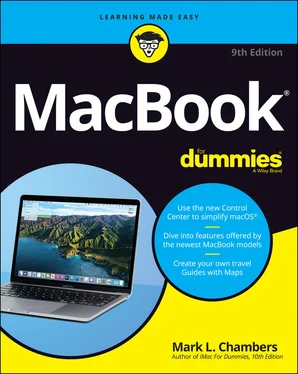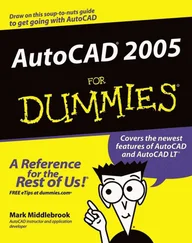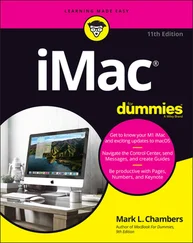Apple offers you the chance to create an iCloud account (which you access with your Apple ID ) during the initial setup of Big Sur. (If you already have an iCloud account from an earlier version of macOS, or if you created an Apple ID while using your iPad or iPhone, you can skip ahead without a second thought.) If you’re careful about your online travels and decide not to supply your personal data, however, you may decide to pass up the chance to create your iCloud account during Big Sur setup, most likely thinking that you’ll take care of it later.
Unfortunately, all sorts of macOS features and applications hinge on your iCloud account, including the App Store, Messages, the iTunes Store, and FaceTime. If you skip the iCloud account-creation process during setup, you can take care of that chore at any time. It’s free and painless, and makes you one of the “in crowd.”
When you’re prompted for an iCloud password by one of the aforementioned applications, click the Create Apple ID/iCloud Account button to start the ball rolling. The application leads you through the process step by step. You can also create your ID through the App Store or the iTunes Store. Click the Account link in either of these applications, and you’re prompted to create your iCloud account.
Note that Apple now uses what it calls 2 Factor Authentication for your Apple ID. This feature provides much tighter security for your Apple ID. But if you share your Apple ID among multiple Macs or between iOS devices (such as an iPhone or iPad), 2 Factor Authentication involves entering a code on each of those computers and devices. Code entry isn’t a huge hassle, but if you’re switching from a Windows PC, it may seem a little strange!
After you start your computer for the first time — or if you’ve just upgraded from macOS Catalina — your laptop launches Big Sur setup automatically. The setup process takes care of several tasks:
Setup provides Big Sur some of your personal information. As I mention in Chapter 1, your Mac ships with a bathtub full of applications, many of which use your personal data (such as your address and telephone number) to fill out your documents automatically. If that stored personal information starts you worrying about identity theft, I congratulate you. If you’re using common sense, sharing your personal data at any time should make you uneasy . In this case, however, you’re fine. Apple doesn’t disseminate this information anywhere else, and the applications that use your personal data won’t send it anywhere either. Also, Safari (the Apple web browser) fills out forms on a web page automatically only if you give your permission.
Setup creates your user account. You’re prompted for a username and password, which Setup uses to create your administrator-level account.
Setup configures your language and keyboard choices. macOS is a truly international operating system, so you’re offered the chance to configure your laptop to use a specific language and keyboard layout.
Setup configures your email accounts in Apple Mail. If you already have an email account set up with your Internet service provider (ISP), keep handy the email-account information that the ISP provided to answer these questions. The info should include your email address and your login name and password. Big Sur can even configure your email account automatically for you (including many web-based email services such as Google Mail, Yahoo! Mail, and Outlook) if you supply your account ID and password. Sweet.
Setup allows you to open an iCloud account. Apple’s iCloud service just plain rocks — especially the free storage. Take my word for it: Join up, trooper, and create your iCloud account during setup. The standard iCloud service is free, and upgrading to additional space is a breeze if you decide that you like the service’s benefits. I go into these benefits in detail in Chapter 9, but for now, just sign up (or sign in, if you already have an iCloud account) and take the opportunity to feel smug about owning an Apple computer.
Setup sends your registration information to Apple. As a proud owner of a MacBook, take advantage of the year of hardware warranty support and the free 90 days of telephone support. All you have to do to use ’em is register. Rest assured that all this info is confidential.
Setup offers to launch Migration Assistant. This assistant guides you through the process of migrating (an engineer’s term for moving ) your existing user data from your old Mac or PC to your laptop. Naturally, if your MacBook is your first computer, you can skip this step with a song in your heart! (Read more on Migration Assistant in “ Importing Stuff from Another Mac,” later in this chapter.)
I’ll be honest: Many people, myself included, don’t register every piece of computer hardware they buy. I didn’t register the wireless Bluetooth adapter I bought for my older iBook, for example, because the expenditure was only around $40, the gizmo has no moving parts, and I’m not likely to need technical support to use it or get it fixed.
Your MacBook is a different kettle of fish, so I strongly recommend that you register your purchase with Apple during the setup process. You spent a fair amount on your computer, and your investment has a significant number of very expensive parts. In fact, I heartily advocate the purchase of an AppleCare Protection Plan extended warranty with your new MacBook for the ultimate in peace of mind. If you can invest a couple of hundred dollars more, you’ll have a full three years of service coverage from the purchase date.
Even the hardiest of technowizards would agree with this important Mark’s Maxim:
 If you don’t register your new laptop, you can’t receive support.™
If you don’t register your new laptop, you can’t receive support.™
Rest assured that Apple isn’t one of those companies that constantly pesters you with email advertisements and near-spam. I’ve registered every Apple computer I’ve owned, and I’ve never felt pestered. (And I have an extremely low tolerance for pester.)
Importing Stuff from Another Mac
If you’re upgrading from an older Mac running macOS to your new Mac laptop, I have great news: Apple includes Migration Assistant. This utility application can help you copy (whoops — I mean migrate ) all sorts of data from your old Mac to your new machine. It does so via your laptop’s wired or wireless Ethernet network connection or an existing Time Machine backup on an external drive.
As I mention earlier, Setup launches Migration Assistant automatically if you indicate that you want to transfer stuff during the setup process, but you can always launch Migration Assistant manually at any time. Simply click the Spotlight search icon (which looks like a magnifying glass) on the Finder menu bar; then type Migration Assistantand press Return.
The list of stuff that gets copied includes the following:
User accounts: If you set up multiple user accounts (so that more than one person can use the computer), the utility ports them all to your new MacBook.
Network settings: Boy howdy, this is a real treat for those with manual network settings provided by an ISP or network administrator! Migration Assistant can re-create the entire network environment of your old Mac on your new laptop.
System Preferences settings: If you’re a fan of tweaking and customizing macOS so that it fits like a glove, rejoice. Migration Assistant copies all the changes you’ve made in System Preferences on your old Mac! (Insert sound of angelic chorus: Hallelujah! )
Читать дальше

 If you don’t register your new laptop, you can’t receive support.™
If you don’t register your new laptop, you can’t receive support.™










